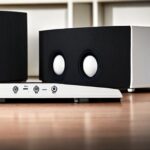To test the speaker on your iPhone, go to Settings > Sounds (or Settings > Sounds & Haptics) and move the Ringer and Alerts slider back and forth. If there is no sound or the speaker button is dimmed, your speaker may require servicing.
Table of Contents
Step 1: Check The Volume Settings
Before diving into any complex troubleshooting steps, it’s important to start with the basics. Checking the volume settings on your iPhone can help identify if the issue lies with the speaker or if it’s simply a matter of adjusting the settings. Follow these simple steps to check the volume settings:
1. Adjust the volume using the side buttons
The easiest way to check if the speaker is working is by adjusting the volume using the side buttons. Simply press the volume up or volume down button located on the side of your iPhone until you reach a comfortable volume level. Make sure the volume is not set to the lowest level and ensure that the mute switch is not turned on.
2. Enable “Change with Buttons” option in Settings > Sounds & Haptics
If the volume buttons didn’t give the desired result, it could be due to the “Change with Buttons” option being disabled. To enable this option, follow these steps:
- Go to the “Settings” app on your iPhone.
- Select “Sounds & Haptics” from the list of options.
- Scroll down and locate the “Change with Buttons” toggle switch.
- Make sure the toggle switch is turned on (green).
3. Test speaker with a different volume level
If the previous steps didn’t solve the issue, it’s worth testing the speaker with a different volume level. Adjust the volume slider in the “Settings” app under “Sounds & Haptics” or use the Control Center to toggle the volume level up and down. Listen for any sound coming from the speaker at different volume levels to determine if it’s working properly.
By following these simple steps, you can quickly check the volume settings on your iPhone and ensure that the speaker is functioning correctly. If the issue persists, you can proceed to the next troubleshooting steps to further diagnose the problem.
Step 2: Test Speaker With Ear
To thoroughly test the speaker on your iPhone, you can use the “Ear” method. This involves placing your ear near the speaker grill and playing audio or making a call to check for any sound output. Follow the steps below to ensure that your iPhone speaker is working correctly:
- Step 1: Make sure your iPhone is not on silent mode. Check the side of your device for the mute switch and ensure that it is not switched on.
- Step 2: Place your ear near the speaker grill located at the top of your iPhone. This speaker is used for phone calls, FaceTime, and other audio outputs.
- Step 3: Play audio or make a call to check for any sound output from the ear speaker. You can play a song or video from your media library, or simply dial a number and make a call to a friend or family member.
- Step 4: If you can hear clear and loud sound from the ear speaker, then it is functioning properly. Congratulations! You can move on to the next step in testing your iPhone’s speaker.
- Step 5: However, if you cannot hear any sound or notice any distortion or crackling noises, there may be an issue with your ear speaker. In this case, you may need to troubleshoot or seek professional help.
Testing the speaker with your ear is a simple yet effective way to ensure that your iPhone is producing sound properly. By following these steps, you can quickly determine whether there is any issue with the ear speaker and take appropriate action.
Step 3: Test Speaker At The Bottom
Now that you’ve tested the speaker at the top of your iPhone, it’s time to move on to the bottom speaker. This speaker is responsible for playing audio and making calls when you hold your iPhone with the bottom facing you.
Play audio or make a call while holding the iPhone with the bottom speaker facing you
To test the bottom speaker, play some audio or make a phone call while holding your iPhone with the bottom speaker facing you. This will allow you to assess the sound output and clarity from this speaker.
Check for sound output and clarity
Listen carefully to the sound coming from the bottom speaker. Make sure it is loud enough and that there are no distortions or crackling noises. The sound should be clear and of good quality. You can also adjust the volume to ensure it is at the desired level.
It’s important to note that any issues with the bottom speaker could affect the audio experience on your iPhone. If you notice any problems, such as low volume, distorted sound, or no sound at all, there may be an issue with the speaker that needs to be addressed.
Testing the speaker at the bottom of your iPhone is an essential part of ensuring its overall functionality and performance. By following these steps and checking for sound output and clarity, you can ensure that your iPhone’s bottom speaker is working properly.

Credit: www.amazon.com
Step 4: Test Speaker With Siri
To ensure that your iPhone speaker is functioning properly, you can use Siri to test its audio output. Follow these steps to test your iPhone speaker with Siri:
Activate Siri by holding the Home button or saying “Hey Siri”
To activate Siri, you have two options – either press and hold the Home button or simply say “Hey Siri” if you have this feature enabled on your device. Once Siri is activated, you will see the Siri interface appear on your screen.
Ask Siri a question and listen for the response
Now that Siri is activated, ask Siri a question or request a command that requires a verbal response. For example, you can ask Siri about the weather or request it to set a reminder for you.
As you ask the question, listen carefully for Siri’s response. Ensure that the sound is clear, without any distortions or crackling noises. You should also check if the volume is at an appropriate level for you to hear Siri’s response clearly.
If you notice any issues with the sound quality or if you are unable to hear Siri’s response, it may indicate a problem with your iPhone speaker that needs to be addressed.
Now, testing your iPhone speaker with Siri is a simple yet effective method to check its functionality. By following these steps and listening for Siri’s response, you can ensure that your speaker is in good working condition. If any issues are detected, it’s advisable to seek professional assistance to resolve the problem with your iPhone speaker.
Step 5: Test Speaker Without Sim
After removing the SIM card from your iPhone, it’s time to test the speaker without relying on cellular service. Here’s how to do it:
Remove the SIM card from your iPhone
To begin, gently eject the SIM card from your iPhone using a SIM card eject tool or a paperclip. Simply insert the tool into the small hole located on the side of your device and apply a slight amount of pressure until the tray pops out. Carefully remove the SIM card from the tray and set it aside.
Once you have removed the SIM card, you can proceed to test the speaker using a Wi-Fi connection. This method allows you to make calls or play audio without the need for cellular service. Follow the steps below:
- Connect your iPhone to a Wi-Fi network. Make sure you have a stable internet connection.
- Open the Phone app on your device and dial a phone number. Alternatively, you can open a music or video streaming app to play audio.
- Hold the iPhone to your ear or ensure the speaker is not obstructed.
- Listen for any sound output from the earpiece or the bottom speaker.
- If you hear clear sound without any distortions or abnormalities, then your iPhone speaker is functioning properly.
If you encounter any issues, such as low volume, crackling noises, or no sound output, it is recommended to perform further troubleshooting or seek professional assistance.
Remember to insert your SIM card back into the iPhone once you have completed the testing process.
By testing the speaker without a SIM card, you can ensure that the quality and functionality of your iPhone’s speakers are not dependent on cellular connectivity. This allows you to isolate and identify any potential issues or defects with the speaker hardware itself.
Step 6: Test Speaker On Ios 15
Once you have ensured that your iPhone is updated to the latest iOS version, it is time to test the speaker functionality on iOS 15. This step is crucial to ensure that your iPhone’s speaker is working properly and that you can enjoy clear and crisp audio.
Update your iPhone to the latest iOS version
Before proceeding with the speaker test, it is important to update your iPhone to the latest iOS version. Updating your iPhone’s software not only brings new features and improvements but also ensures compatibility with the latest apps and fixes any bugs or issues that might affect the speaker functionality.
To update your iPhone to the latest iOS version, follow these steps:
- Connect your iPhone to a stable Wi-Fi network.
- Go to the Settings app on your iPhone.
- Scroll down and tap on “General”.
- Tap on “Software Update”.
- If an update is available, tap on “Download and Install”.
- Follow the on-screen instructions to complete the update process.
Test the speaker functionality on iOS 15
Once your iPhone is updated to the latest iOS version, you can now proceed to test the speaker functionality on iOS 15. Follow the steps below to ensure that your iPhone’s speaker is working properly:
- Launch the Settings app on your iPhone.
- Scroll down and tap on “Sounds & Haptics”.
- Tap on “Ringer and Alerts”.
- Drag the slider back and forth a few times to test the speaker.
- If you can hear clear and crisp sound, your speaker is functioning properly.
- If you cannot hear any sound or if the speaker button is dimmed, your speaker may need to be serviced.
Testing the speaker functionality on iOS 15 is essential to ensure that you can enjoy your iPhone’s audio features to the fullest. If you experience any issues with the speaker, such as distorted sound or low volume, it is advisable to seek professional help or contact Apple Support for further assistance.
Step 7: Test Speaker On Iphone 11 Or Newer Models
If you own an iPhone 11 or a newer model, testing the speaker is just as simple. Just like the previous steps, follow the instructions below to ensure your speaker is in perfect working condition.
1. Start by accessing the Control Center on your iPhone. To do this, swipe down from the top-right corner of the screen (or swipe up from the bottom of the screen if you are using an iPhone with a home button).
2. Look for the speaker icon located at the bottom-left corner of the Control Center. It should resemble a speaker with sound waves coming out of it. Tap on the speaker icon.
3. Once you tap on the speaker icon, it will activate the loudspeaker mode. This means that all the audio output, including calls and media playback, will be directed through the bottom speaker of your iPhone.
4. Play any audio or video file to test the speaker. It can be a song, a video with sound, or even a voice recording. Make sure the sound is audible and without any distortions or crackling noises.
5. Listen carefully to the audio and check if both the volume and quality are satisfactory. If you notice any issues, such as low volume or poor sound quality, it may indicate a problem with your speaker.
6. If everything sounds good, you can also test the speaker during a phone call. Make a call to another device or ask someone to call you.
During the call, check if you can hear the other person clearly through the loudspeaker. Remember, a malfunctioning speaker can impact your overall iPhone experience, so it’s crucial to test it regularly to ensure it’s working properly.
If you encounter any issues or suspect there might be a problem, it’s recommended to get your iPhone checked by a professional technician or contact Apple Support for further assistance.
Troubleshooting And Common Issues
When it comes to the iPhone speaker, it’s not uncommon to encounter issues. Whether your speaker is not working at all, seems to be broken, or you suspect you may have blown it, there are steps you can take to troubleshoot and fix the problem. In this section, we will explore some common issues and provide solutions to help you get your iPhone speaker back in working order.
Speaker not working on iPhone? Here’s what you can do.
It can be frustrating when your iPhone speaker stops working. Before jumping to conclusions and assuming the worst, try the following steps to troubleshoot the issue:
- Check the volume settings: Make sure the volume on your iPhone is turned up and not set to mute. You can adjust the volume settings by going to Settings > Sounds & Haptics.
- Restart your iPhone: Sometimes a simple restart can fix minor software glitches. Press and hold the power button until the “slide to power off” option appears, then slide to turn off your iPhone. Wait a few seconds, then press and hold the power button again to turn it back on.
- Remove any accessories: If you have any accessories, such as headphones or a Bluetooth device, connected to your iPhone, disconnect them and see if the speaker starts working. Sometimes, these accessories can interfere with the audio output.
- Clean the speaker grill: Dust and debris can accumulate on the speaker grill, affecting the sound quality. Gently clean the speaker grill using a soft, dry cloth or a small brush to remove any obstruction.
- Check for software updates: Outdated software can sometimes cause audio issues. Go to Settings > General > Software Update to check for any available updates and install them if necessary.
- Reset all settings: If none of the above steps work, you can try resetting all settings on your iPhone. Go to Settings > General > Reset > Reset All Settings. Keep in mind that this will reset all your personalized settings, so make sure to back up your data before proceeding.
How to fix a broken iPhone speaker
If you have tried the troubleshooting steps above and your iPhone speaker is still not working, it may be time to consider fixing or replacing it. Here are a few options:
- Contact Apple Support: If your iPhone is still under warranty or you have AppleCare+, reach out to Apple Support for assistance. They can guide you through the repair or replacement process.
- Visit an authorized service center: Apple has authorized service centers where trained technicians can diagnose and repair your iPhone speaker. Use Apple’s online support locator to find a service center near you.
- Seek professional repair services: If your warranty has expired or you prefer not to go through Apple, you can also look for reputable repair shops or third-party service providers that specialize in iPhone repairs. Make sure to do your research and read reviews before choosing a repair service.
How to know if you blew your iPhone speaker
If you suspect that you have blown your iPhone speaker, there are some signs to look out for:
- Static or crackling noises: If you hear static or crackling noises coming from the speaker, it could indicate damage.
- Poor sound quality: If the sound coming from the speaker is muffled, distorted, or significantly lower in volume than usual, it may indicate speaker damage.
- Difficulty hearing calls: If you have trouble hearing calls clearly even with the volume turned up, it could be a sign of a damaged speaker.
If you experience any of these symptoms, it’s recommended to follow the steps mentioned earlier to troubleshoot the issue. If the problem persists, it’s best to seek professional assistance for repair or replacement.
iPhone Speaker Test Online
You can try the following steps:
Online Tone Generators:
- Websites like online-tone-generator.com allow you to generate different frequencies. Play tones at various frequencies and check if your iPhone speakers produce the expected sound.
YouTube Videos:
- There are videos on YouTube specifically created for testing speakers and headphones. Search for “speaker test” or “audio test” on YouTube and play a video to check the sound on your iPhone.
Audio Testing Apps:
- You can also use audio testing apps available on the App Store. These apps often include features for testing different aspects of audio, including speakers.
Remember to be cautious when using third-party tools, and ensure they are reputable and trustworthy to avoid potential security or privacy risks. Always be mindful of the volume level to avoid damage to your speakers or hearing.
If you’re facing specific issues with your iPhone speakers, it might be a good idea to contact Apple support or visit an Apple Store for assistance. Additionally, check the App Store for any new apps or tools that may have been released since my last update.
How To Check Iphone Ear Speaker
Frequently Asked Questions For How To Test Iphone Speaker
How Do I Test Both Speakers On My Iphone?
To test both speakers on your iPhone:
1. Go to Settings > Sounds and drag the Ringer And Alerts slider to turn up the volume.
2. If you can’t hear any sound or if the speaker button is dimmed, your speaker may need servicing.
3. If you’re experiencing sound quality issues, static or crackling noises, your iPhone speaker may be damaged.
4. Another option is to watch videos or play music to check if both speakers are working properly.
How Do I Reset My Iphone Speakers?
To reset your iPhone speakers, follow these steps:
1. Go to Settings.
2. Tap on Sounds.
3. Drag the Ringer and Alerts slider back and forth a few times.
4. If you still can’t hear any sound, your speaker may need servicing.
How Do I Know If I Blew My Iphone Speaker?
If you can’t hear calls clearly, notice static or crackling noises, or experience sound quality issues, your iPhone speaker may be blown.
What Should I Do If My Iphone Speaker Not Working?
If your iPhone speaker is not working, try these steps:
1. Check the volume settings in Settings > Sounds and adjust the Ringer and Alerts slider.
2. Clean the speaker and remove any debris that might be blocking it.
3. Turn off features like Touch or Bluetooth to see if that resolves the issue.
4. Force restart your iPhone by pressing and holding the Power button and the Volume Down button.
5. Reset your iPhone by going to Settings > General > Reset > Reset All Settings.
6. Update your iPhone’s software to the latest version.
7. If none of these steps work, there may be a hardware issue and you should consider contacting Apple for service.
Also Read: Iphone Microphone Not Working
Conclusion
If you’re experiencing issues with your iPhone speaker, don’t fret! Testing the speaker can be done easily with a few simple steps. Begin by checking for any physical obstructions or debris that may be blocking the speaker grill. Next, adjust the volume settings and ensure that the sound is not muted or too low.
If the problem persists, try restarting your iPhone or updating the software to see if that resolves the issue. In some cases, a hardware problem may be the culprit, and it’s best to seek professional assistance. Remember, taking care of your iPhone speaker is important to ensure optimal sound quality and functionality.
By following these steps, you can diagnose and potentially fix any problems with your iPhone speaker, allowing you to continue enjoying your device to the fullest.

Williams Kane is a blogger and writer. He’s passionate about writing and connecting with the community, especially when it comes to sharing his ideas through writing.
I am a versatile author with a passion for exploring a wide range of topics on our multi-niche website. With a background in research and a love for writing, I bring a unique blend of expertise to our platform.
My journey began in the world of science, where I earned a degree in biology and developed a deep fascination for the natural world. This background enables me to delve into topics related to ecology, environmental conservation, and the wonders of the animal kingdom.
However, my curiosity knows no bounds, and I have ventured into various other niches as well. From technology trends and digital innovations to health and wellness tips, I strive to provide well-researched and engaging content that informs and entertains our diverse audience.
Furthermore, my dedication to staying current with the latest developments in each niche ensures that our readers receive up-to-date and reliable information. Whether it’s deciphering complex scientific concepts or simplifying tech jargon, I take pride in making complex subjects accessible to all.
Join me on our multi-niche journey, where we explore the depths of knowledge and share insights on a multitude of topics to inspire, educate, and entertain.




